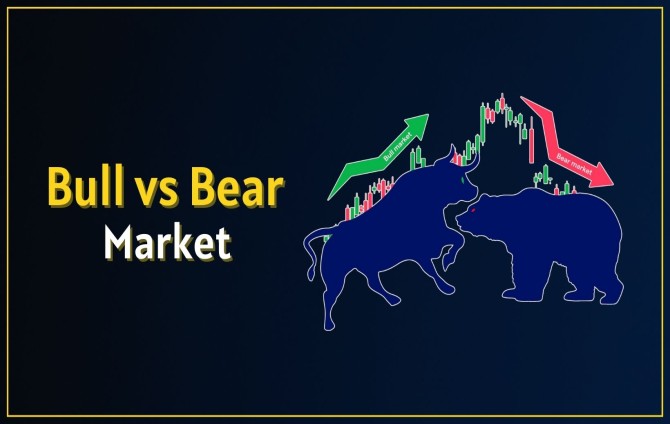
Bull vs Bear Market: What Are They?
Understand the dynamics of a bull or bear market to make informed investment decisions. Uncover the fundamental differences between these market conditions.
Introduction: What Is a Bull or Bear Market?
Have you ever heard investors discuss the stock market using terms like "bull" or "bear"? What do these terms mean, you might ponder? Well, fret not! We're here to shine a light on what exactly a bull or bear market means.
A Bullish Market Defined
For starters, a "bull market" refers to a financial environment where prices are predicted to rise. In simpler terms, when we're in for good times financially, it's called a bull market. It's a period where economy's spirits are high, investor confidence is boosted, and the vibe is one of economic prosperity.
Still curious about why it's named after the mighty bull? The answer lies within the attributes of the animal itself. Bulls attack by thrusting their horns upward, which paints a picture of rising stock prices.
The Bear Market: An Overview
On the flip side, a "bear market" depicts a scenario where prices are expected to drop. This term is derived from the bear's tendency to swipe downwards. It symbolizes a declining economy and generally invokes a sense of pessimism among investors.
A bear market is not all doom and gloom, though. For the keen and patient investor, it can present an opportunity to buy low and sell high when the market bounces back.
Comparing Bull vs Bear Markets
Bull and bear markets are as different as night and day. Here's how:
A bull market signifies economic growth, a growing GDP, and strong investor confidence. A bear market, conversely, is associated with economic slowdown, declining GDP, and eroding investor confidence.
In a bull market, investors are likely to make more bullish (positive) trades expecting prices to increase. In a bear market, investors lean towards bearish (negative) trades predicting price drops.
While the bull and bear market provide contrasting environments, understanding both is crucial to strategize your investments effectively.
In Conclusion
In summary, bull and bear markets represent the cycles of the financial markets. A bull market signifies prosperity and growth, whereas a bear market indicates a decline. By understanding these terms, you can better appreciate market trends and enhance your investment strategy.
Remember the mantra of smart investing - "buy low, sell high". You'll aim to buy during the bear, and sell during the bull. Happy investing!

